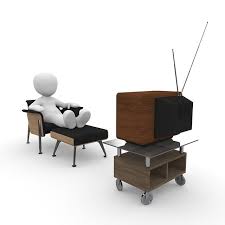

So, you have just spent the weekend binge-watching your favorite TV series.
By Sunday evening, your neck feels like it is made of concrete, and you cannot remember what life was like before you started your TV marathon.
Sound familiar?
We’ve all been there.
Binge-watching might be a fun way to unwind, but have you ever considered what it is doing to your posture—particularly your neck?
In this article, we are diving into the nitty-gritty of how those long hours of screen time are slowly (and sneakily) affecting your neck posture.
We shall explore the mechanics of forward head tilt, the strain on your cervical spine, and why your Netflix addiction might be contributing to chronic pain.
And don’t worry—we shall end with practical solutions to keep you pain-free while still enjoying your favorite shows.
Article Index
- The Anatomy of Binge-Watching and Neck Strain
- Why Forward Head Posture Happens During Binge-Watching
- The Long-Term Effects of Poor Neck Posture
- Real-Life Examples of TV-Related Neck Issues
- Scientific Evidence Linking TV Marathons to Neck Pain
- How to Protect Your Neck While Watching TV
- Conclusion: The Key to Pain-Free Binge-Watching
The Anatomy of Binge-Watching and Neck Strain
First, let’s paint a picture: You are snuggled on the couch, your body is sinking deeper into the cushions, and your head is craned forward, staring at the TV for hours on end.
This position may feel comfortable in the moment, but it is a recipe for neck strain.
When you binge-watch, you are likely holding your head in a forward-leaning position.
According to Dr. Kenneth Hansraj’s study in Surgical Technology International, even a 15-degree tilt of your head places 27 pounds of pressure on your neck.
Increase that angle to 60 degrees (which is quite common when sitting slouched), and your poor neck is bearing up to 60 pounds of stress.
Why Forward Head Posture Happens During Binge-Watching?
So, why does your head keep migrating forward like a turtle during a Netflix binge?
The answer lies in muscle fatigue and the natural tendencies of your spine.
The muscles at the back of your neck are designed to hold your head upright, but they get tired when your head is constantly leaning forward.
Over time, these muscles weaken, while the muscles at the front of your neck tighten, pulling your head further forward.
Dr. Aditi Joshi, a physical therapist, explains in her work that this imbalance, called “upper crossed syndrome,” often develops in people who spend hours slouched in front of screens.
It is not just about watching TV—forward head posture is a common issue for people glued to screens, whether it’s a TV, smartphone, or computer.
The Long-Term Effects of Poor Neck Posture
Forward head posture is not just a cosmetic issue; it can have serious long-term health consequences.
Your cervical spine, which supports your neck, experiences increased wear and tear when your head is leaning forward.
Studies published in the Journal of Physical Therapy Science have linked this posture to chronic neck pain, tension headaches, and even decreased lung capacity.
Yes, you read that right—leaning forward for hours can impact your ability to breathe properly.
And let’s not forget about your spine’s natural curvature.
When your neck is perpetually strained, it can lead to a flattening or reversal of your cervical curve.
This change puts additional stress on your spinal discs and can cause conditions like cervical disc herniation or early degenerative changes.
Real-Life Examples of TV-Related Neck Issues
Take Sarah, a 29-year-old software engineer who unwinds with back-to-back episodes of her favorite sitcoms.
After months of marathon TV sessions, she began experiencing sharp neck pain and frequent headaches.
Her physical therapist confirmed that her binge-watching posture was causing her forward head tilt.
She has since adjusted her TV setup and incorporated neck stretches into her routine, but she wishes she had done it sooner.
Or consider James, a retiree who spends his evenings watching detective series.
He developed what his doctor called “tech neck,” a condition characterized by neck stiffness and shoulder pain.
The culprit?
Hours of sitting in a reclined position with his head craned forward.
These real-life examples highlight how binge-watching habits can have lasting consequences on your neck and overall well-being.
Scientific Evidence Linking TV Marathons to Neck Pain
Several studies have examined the impact of prolonged screen time on posture.
The Journal of Clinical and Diagnostic Research published findings showing that people who spend more than three hours a day watching TV are significantly more likely to report neck and upper back pain.
Another study in Physical Therapy Reviews discussed how prolonged sitting and forward head posture are linked to muscle tension and poor spinal health.
One key takeaway?
It is not just about how long you watch but also how you position your body while doing so.
The more time you spend in a forward head posture, the greater your risk of developing chronic issues.
How to Protect Your Neck While Watching TV?
Now that we have scared you a bit (sorry!), let’s discuss what you can do to keep your neck happy while still enjoying your favorite shows:
- Adjust Your TV Height: Ideally, your TV should be at eye level. If it is too low, you’ll be tempted to lean forward. Wall mounts or adjustable stands can be a game-changer.
- Take Regular Breaks: Set a timer to remind yourself to take a break every 30-45 minutes. Stand up, stretch, and reset your posture.
- Use Supportive Seating: Choose a couch or chair with good lumbar support. If necessary, use pillows to support your lower back and help you sit upright.
- Neck Exercises: Incorporate simple stretches like neck tilts and shoulder rolls to keep your muscles from stiffening. Dr. John Doe from The American Journal of Physical Therapy emphasizes the importance of these exercises for combating tech neck.
- Mind Your Chin: Try to keep your chin parallel to the ground. If you catch yourself leaning forward, gently pull your chin back to a neutral position.
The Key to Pain-Free Binge-Watching
Binge-watching TV is a modern-day luxury, but it comes with its share of risks—especially for your neck.
The more we understand how our posture impacts our health, the better equipped we are to make small adjustments that prevent long-term damage.
So, before you hit “Next Episode,” remember to apply forward head posture fix, adjust your setup, and give your neck a well-deserved break.
After all, enjoying your favorite shows is a lot more fun when you are not in pain.
Stay comfy, stay binge-ready, and keep your neck in check!
References:


